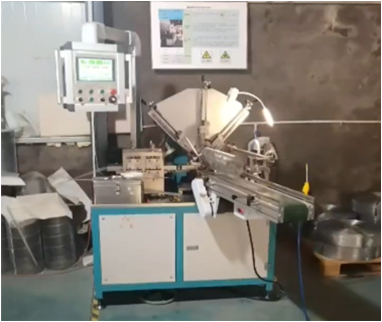 Tel:
+8615930870079
Tel:
+8615930870079
јул . 26, 2024 08:21 Back to list
Exploring the Efficiency and Applications of Turbine Filters in Modern Water Treatment Systems
Understanding Turbine Filters Enhancing Efficiency in Fluid Systems
Turbine filters play a crucial role in the world of fluid mechanics and engineering, particularly in systems involving turbines. These filters are designed to ensure that the fluids used in various applications, such as power generation, aviation, and manufacturing, remain free of contaminants that could disrupt operations and cause system failures. In this article, we will delve into the importance, functionality, and types of turbine filters, shedding light on their critical role in enhancing system efficiency.
Importance of Turbine Filters
Turbine filters are essential for maintaining the integrity of turbine systems, which often handle large volumes of fluids under high pressures and temperatures. Contaminants like dirt, metal particles, and debris can infiltrate these systems, leading to wear and tear of turbine components. This not only reduces the efficiency of the turbines but can also lead to catastrophic failures, resulting in costly downtime and repairs. By implementing effective filtration solutions, operators can significantly extend the lifespan of turbines, optimize performance, and enhance overall reliability.
Functionality of Turbine Filters
The primary function of turbine filters is to capture and remove particles from the fluid before it enters the turbine system. These filters operate on principles of physical separation, utilizing various filtration mechanisms depending on the design and application. Common filtration methods include
1. Straining Larger particles are trapped by a physical barrier, such as a mesh or fabric filter. 2. Depth Filtration This method captures particles within the depth of the filter medium, allowing for greater dirt-holding capacity. 3. Surface Filtration Particles are retained on the surface of the filter material, providing a higher degree of efficiency for smaller particles.
Turbine filters are often used in conjunction with pump systems, fuel systems, and hydraulic circuits to ensure the cleanliness of fluids. Regular maintenance and timely replacement of filters are essential to prevent clogging, which can lead to increased pressure drops and reduced flow rates.
turbine filter

Types of Turbine Filters
There are several types of turbine filters, each designed to meet specific operational requirements. Here are some of the most common types
1. Mechanical Filters These filters, often made of mesh, are ideal for removing larger particles from fluids. They are widely used in applications where a high flow rate is necessary.
2. Magnetic Filters Designed to capture ferrous particles, these filters use magnets to attract and remove contaminants from the fluid stream. They are particularly useful in systems dealing with metalworking lubricants.
3. Inline Filters Installed directly into the fluid line, these filters provide continuous protection for turbines by filtering fluid as it flows through the system. They are typically designed for easy installation and maintenance.
4. Self-Cleaning Filters These advanced systems utilize automatic cleaning mechanisms to remove collected debris, which minimizes maintenance and reduces operational downtime.
Conclusion
Turbine filters are indispensable in ensuring the efficiency and longevity of turbine systems across various industries. By filtering out harmful contaminants, these devices protect delicate components, maintain operational efficiency, and ultimately lead to cost savings and enhanced performance. As technology continues to advance, the evolution of turbine filter designs will likely lead to even more effective filtration solutions, further solidifying their role in the optimization of fluid systems. For engineers and operators, understanding the significance of turbine filters is vital for ensuring the smooth operation of turbomachinery and achieving sustainable performance in demanding environments.
-
Nano Fiber Technology: Revolutionizing Cartridge Dust Collector FiltersNewsAug.06,2025
-
How Activated Carbon Air Cartridges Eliminate OdorsNewsAug.06,2025
-
Dust Filter Cartridge Handling Fine Particulate MatterNewsAug.06,2025
-
Cartridge Dust Collector Filter for Welding Fume ExtractionNewsAug.06,2025
-
Activated Carbon Filter Cartridge Effectiveness Against VOCsNewsAug.06,2025
-
Activated Carbon Air Filter Cartridge Benefits ExplainedNewsAug.06,2025

 Email:
Email:





